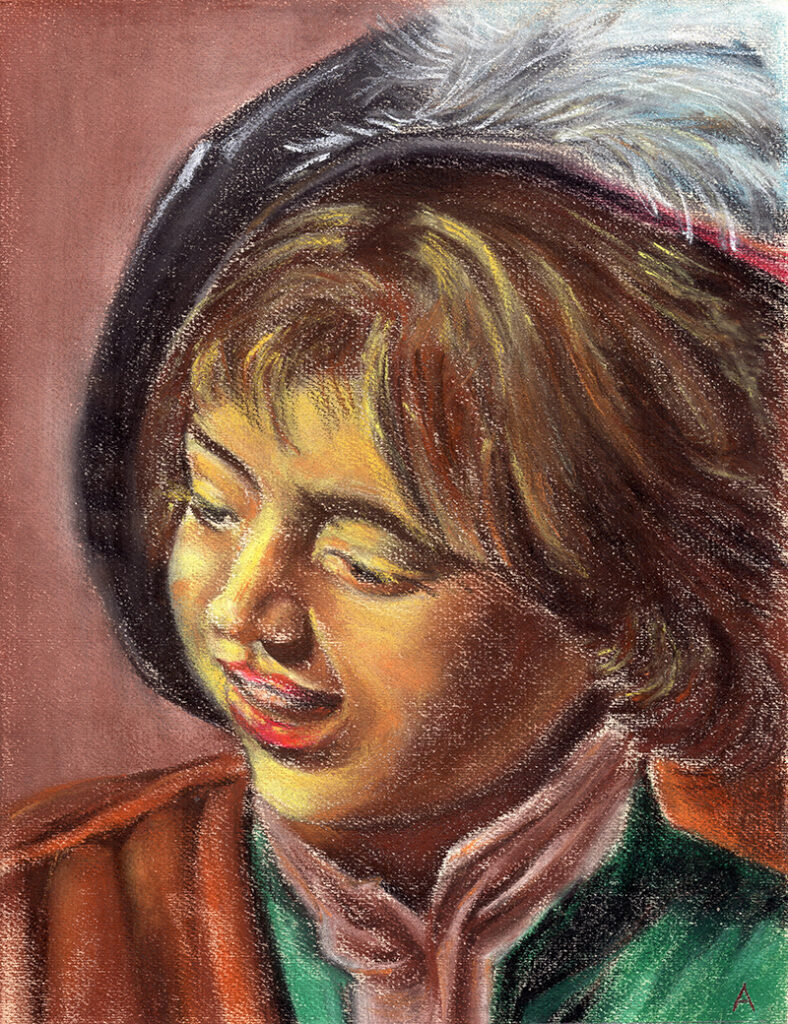
[A cropped copy of Frans Hals’ Singing Boy with Flute, 1623, Pastel, Architecture 35: Decorative Arts, University of Notre Dame, 1963]


[A cropped copy of Frans Hals’ Singing Boy with Flute, 1623, Pastel, Architecture 35: Decorative Arts, University of Notre Dame, 1963]
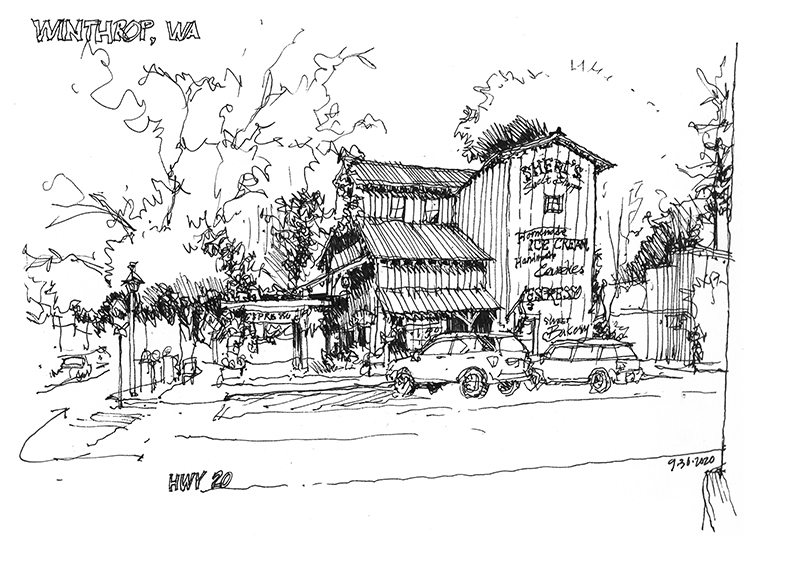
This view shows State Highway 20 approaching from the southwest and turning southeast through the middle of Winthrop, a small town at the confluence of the Methow and Chewuch rivers in the Methow Valley. While the town’s first postmaster, Guy Waring, is considered to be its founding father, the town is actually named after Theodore Winthrop, a 19th-century author who explored the Northwest in the 1850s.
What is striking about Winthrop’s main street is the Old West theme of the storefronts, the result of a westernization program that began in 1972 as Highway 20 through the North Cascades was nearing completion. Designed by architect Robert Jorgenson to promote tourism, the restoration was funded by local merchants along with a generous grant from lumber mill owners Kathryn and Otto Wagner.
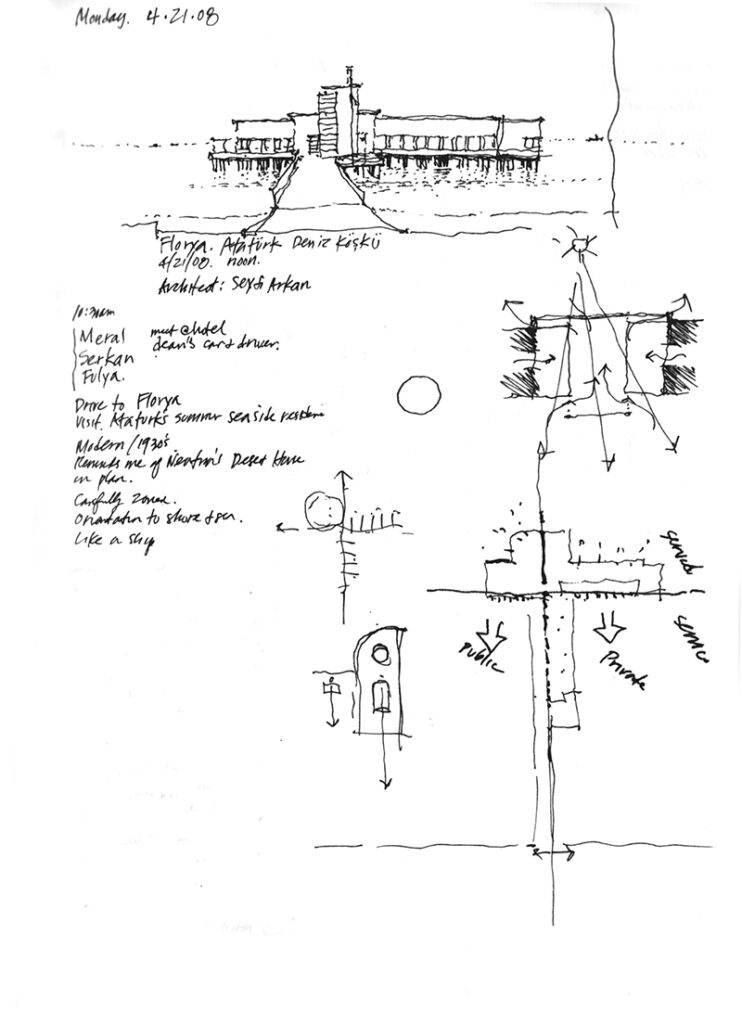
In 2008, Yapı-Endüstri Merkezi (YEM) gave me the opportunity to offer a drawing workshop for Turkish students in Istanbul. After the two-day event, Dr. Meral Erdoǧan and Dr. Fulya Ozsel Akipek of Yildiz Technical University invited me to tour the Florya Atatürk Marine Mansion, summer residence of Mustafa Kemal Atatürk, founding father of the Republic of Turkey. Located along the shore of the Sea of Marmara, the Bauhaus style structure was designed by architect Seyfi Arkan and built in 1935. These quick sketches reflect a study of the design’s zoning and orientation to both shore and sea.
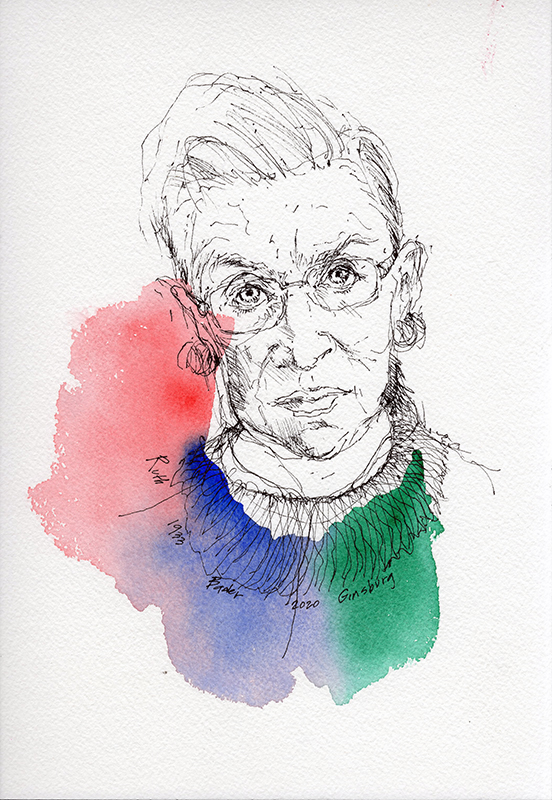
“At Cornell University, my professor of European literature, Vladimir Nabokov, changed the way I read and the way I write. Words could paint pictures, I learned from him. Choosing the right word, and the right word order, he illustrated, could make an enormous difference in conveying an image or an idea.”
—Ruth Bader Ginsburg, 1933–2020
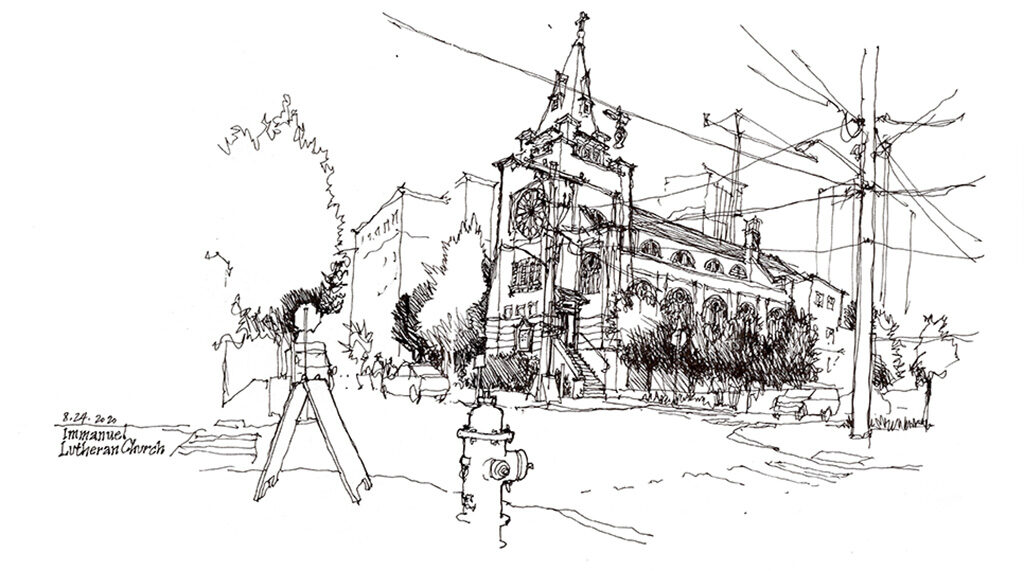
Amid the slew of new office and residential towers being built in the Cascade neighborhood of Seattle stands Immanuel Lutheran Church, at the southeast corner of Pontius Avenue North and Thomas Street. Designed by Aberdeen architect Watson W. Vernon, the church was built in 1907, designated a Seattle landmark in 1981, and added to the National Register of Historic Places in 1982.
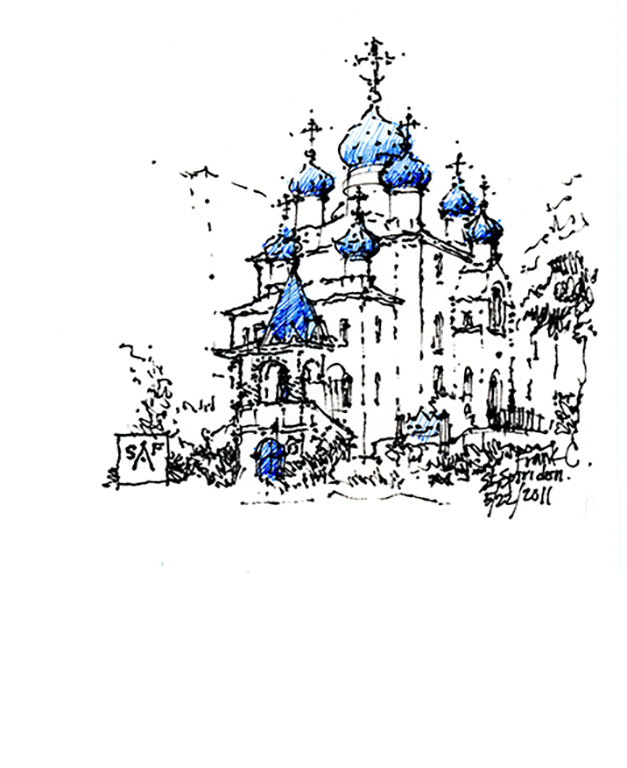
About a block away is another proud structure withstanding the onslaught of new construction, St. Spiridon Orthodox Cathedral. This was drawn back in 2011 as a napkin sketch for an auction benefiting the Seattle Architecture Foundation.
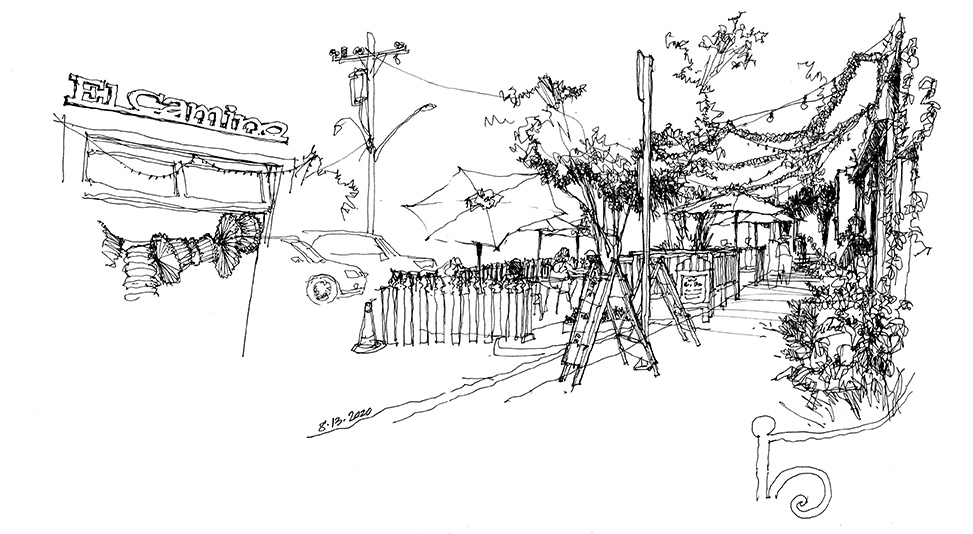
This view of El Camino, a Fremont neighborhood eatery, illustrates how Seattle, like many other cities, is allowing restaurants to temporarily expand their outdoor seating into public sidewalks and street parking spaces. This move to help restaurants survive during the COVID-19 pandemic is often augmented by streamlining the permitting process and waiving fees. There is some sentiment to try to preserve these new neighborhood streetscapes even after the pandemic is over.
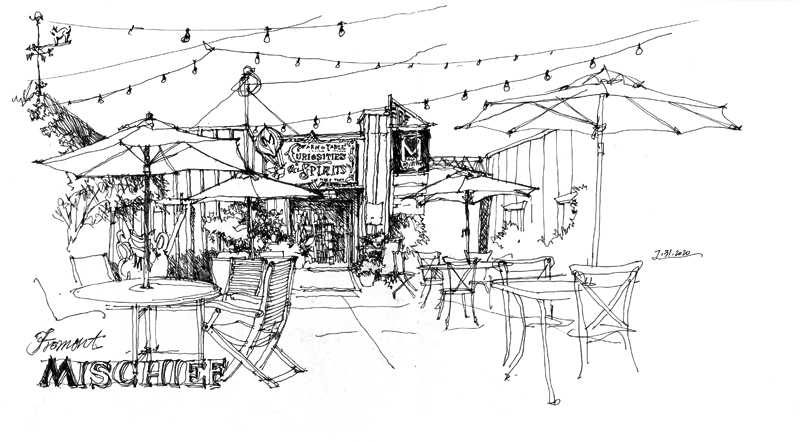
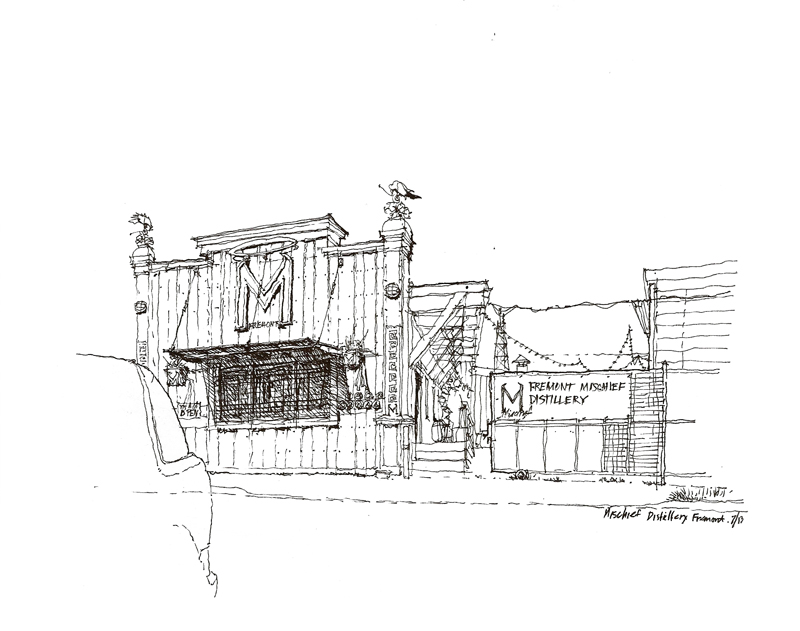
Mike and Patti Sherlock started making rye whiskey in the late 1990s from a recipe from the journals of John Jacob, an immigrant from Holland and Patti’s great-grandfather. When Washington state passed the craft law in 2008, Mike and Patti founded Fremont Mischief Distillery. Fremont Mischief distills rye whiskey, gin, and vodka using winter wheat grown on Whidbey Island and rye from small Washington State farms and the Willamette Valley in Oregon.
Above is a sketch of the courtyard of Fremont Mischief Distillery that I did recently while enjoying a glass of Fremont Lush. Below it is a street view from 2013, before the addition of the restaurant/rooftop terrace.
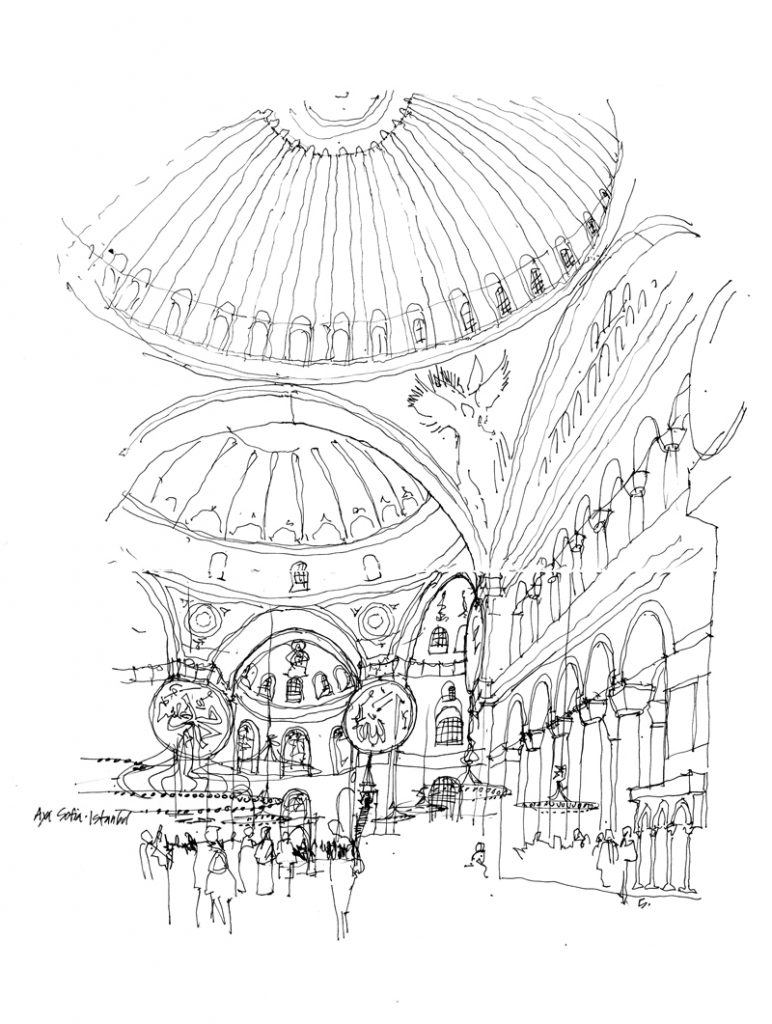
It was reported last week that Turkey’s Council of State had granted President Recep Tayyip Erdogan permission to open the Hagia Sophia museum to Muslim prayer. It is sad to see the venerable structure, long a symbol of peaceful religious coexistence, being converted into a working mosque for what appears to be political reasons.
Built in the year 537 as an Orthodox Christian cathedral by the Byzantine emperor Justinian, Hagia Sophia was converted to an imperial mosque after the Ottoman conquest of Constantinople in 1453. But in 1934, the cabinet of Turkish leader Mustafa Kemal Ataturk decreed that it be turned into a museum. It subsequently became a Unesco World Heritage site much beloved by both local and foreign tourists for the awe-inspiring scale and beauty of its domed structure, along with its religious iconography and historical significance.
Because Hagia Sophia already has a remarkable record for enduring natural and artificially imposed disasters, there is hope. Hagia Sofia’s future is yet to be written.
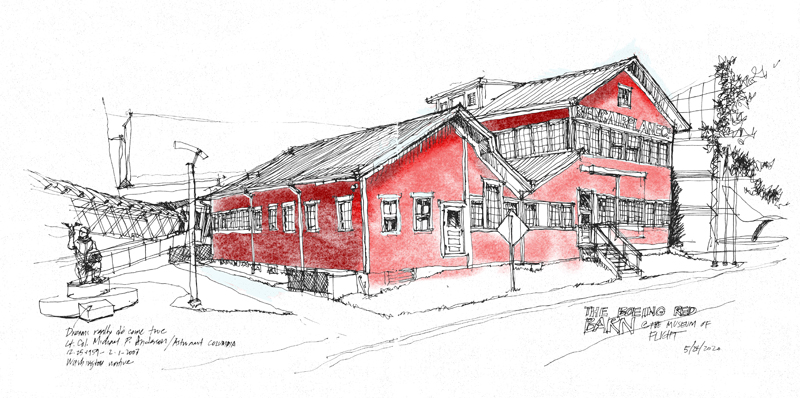
In 1910, William E. Boeing bought a failing wooden boat shipyard situated on the Duwamish River for $10. The purchase included this building, the Red Barn, which first housed the operations of Pacific Aero Products and later the Boeing Aircraft Company. The Red Barn subsequently served as Boeing’s world headquarters from 1917 to 1929.
In 1975, the Red Barn was barged up river two miles and trucked to its present location, around which the current Museum of Flight was constructed.
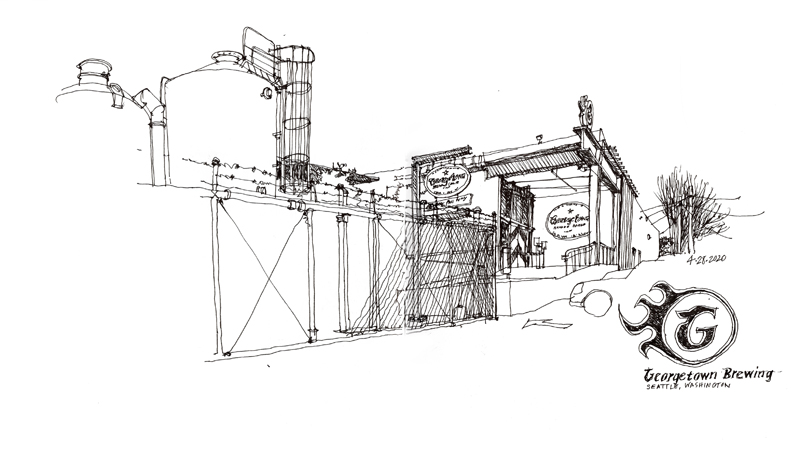
Roger Bialous and Manny Chao began brewing test batches of pale ales in 2002 and their Georgetown Brewing Company delivered the first kegs of their namesake Manny’s Pale Ale in 2003. Their brewery was first housed in the old Seattle Brewing and Malting building in, of course, the Georgetown neighborhood of Seattle. In 2012, they moved to new headquarters, brewery, and warehouse on nearby Denver Avenue South (shown above). A taproom offering 24 taps opened recently but is currently closed due to the coronavirus pandemic. While Georgetown Brewing first produced draft-only beers, they now can a few select brews – Manny’s Pale Ale, Lucille IPA, Roger’s Pilsner, and my personal favorite, Bodhizafa IPA.